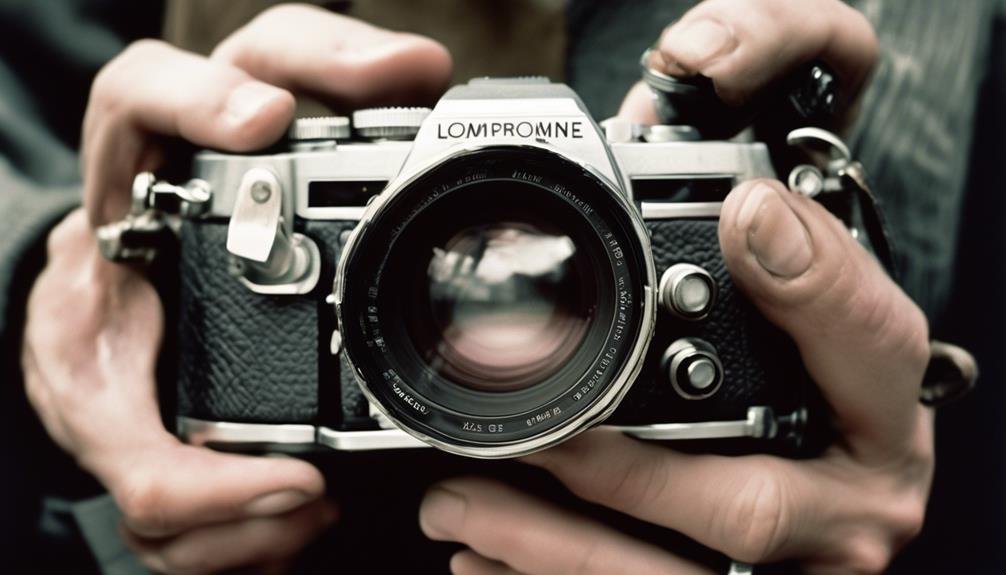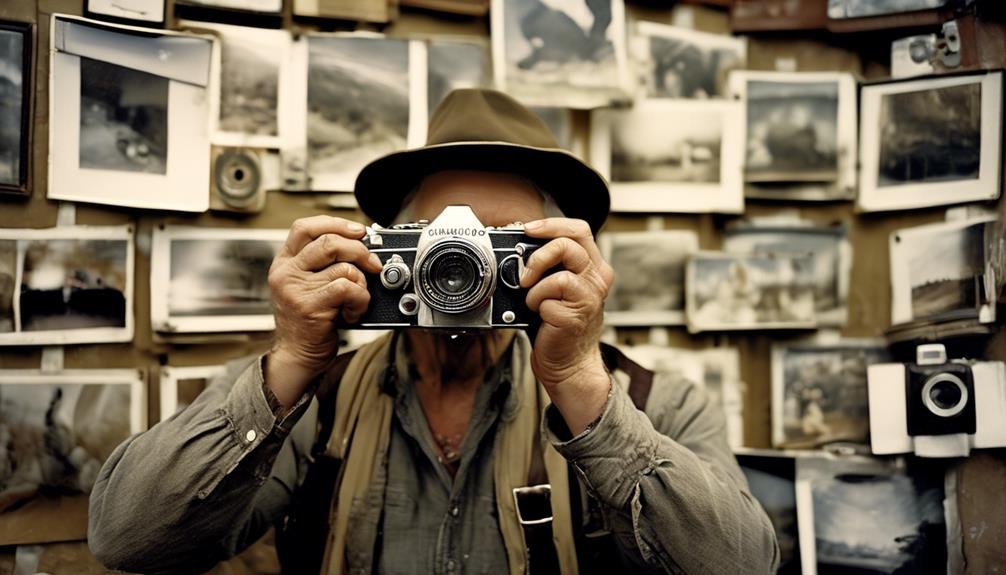
Have you ever found yourself at a crossroads, trying to decide between two equally compelling options? When it comes to choosing between a crop sensor and a full-frame camera, the decision can seem just as daunting. We often hear differing opinions on which one is better, but the truth is, the answer depends on various factors that are unique to each photographer's needs and preferences. As we delve into the nuances of image sensor sizes and their impact on photography, we'll uncover the advantages and considerations that can help us make an informed decision. So, how do we know which is truly better for us?
Understanding Image Sensor Sizes
When comparing crop sensor and full-frame cameras, it is essential to understand the differences in image sensor sizes. Sensor technology plays a pivotal role in determining the image quality and capabilities of a camera. Crop sensor cameras have a smaller sensor size compared to full-frame cameras, resulting in certain limitations. The smaller size of the crop sensor affects the field of view and depth of field, making it suitable for certain types of photography such as wildlife or sports where the extra reach provided by the crop factor is advantageous. However, this smaller size also comes with trade-offs, particularly in low-light performance and overall image quality. Full-frame cameras, on the other hand, offer superior image quality, especially in low-light conditions, due to their larger sensor size. They also provide a shallower depth of field, ideal for portrait and landscape photography. Understanding these differences in sensor sizes is crucial for photographers and videographers when selecting the most suitable camera for their specific needs.
Advantages of Crop Sensor Cameras
Crop sensor cameras offer distinct advantages in certain photographic situations, leveraging their smaller sensor size to provide specific benefits. While full-frame cameras excel in certain areas, crop sensor cameras are not to be overlooked, especially when considering factors like low light performance and depth of field limitations.
| Advantages of Crop Sensor Cameras | Description |
|---|---|
| 1. Extended Depth of Field | Due to the crop factor, crop sensor cameras inherently provide a greater depth of field, making them ideal for landscape and architectural photography where maximum detail throughout the scene is desired. |
| 2. Increased Effective Reach | The crop factor effectively extends the focal length of lenses, making crop sensor cameras advantageous for wildlife and sports photography, allowing photographers to get closer to the action without the need for extremely long and expensive telephoto lenses. |
| 3. Cost-Effectiveness | Crop sensor cameras and lenses are generally more budget-friendly than their full-frame counterparts, making them a practical choice for enthusiasts and professionals looking to enter the world of photography without breaking the bank. |
| 4. Improved Low Light Performance | While full-frame sensors typically perform better in low light, advancements in crop sensor technology have significantly improved their low light performance, providing satisfactory results in challenging lighting conditions. |
Benefits of Full-Frame Mirrorless Cameras

Considering the advantages of crop sensor cameras, it's essential to examine the distinct benefits that full-frame mirrorless cameras offer to photographers. Full-frame mirrorless cameras excel in low light conditions due to their larger sensor size, allowing for better performance at higher ISO settings without compromising image quality. This is particularly beneficial for capturing nighttime scenes or indoor events where lighting may be limited. Additionally, the larger sensor size of full-frame mirrorless cameras contributes to superior depth of field control, enabling photographers to achieve more pronounced background blur for artistic effects or to isolate subjects with precision. The ability to create stunning bokeh and capture fine details in both foreground and background elements can greatly enhance the visual impact of photographs, adding a professional touch to the imagery. Overall, full-frame mirrorless cameras offer significant advantages in challenging lighting situations and provide greater creative control over depth of field, making them a compelling choice for photographers seeking innovation and exceptional image quality.
Considerations for Lens Compatibility
To ensure optimal performance and functionality, it is essential to carefully consider the compatibility of lenses with full-frame mirrorless cameras. When evaluating lens compatibility for full-frame mirrorless cameras, there are several crucial factors to consider:
- Lens Mount Type: Full-frame mirrorless cameras often have a different lens mount compared to crop sensor or DSLR cameras. It is important to ensure that the lenses being considered have the appropriate mount for the specific full-frame mirrorless camera model.
- Focal Length Restrictions: Some full-frame mirrorless cameras have focal length restrictions when using certain lenses. This can impact the field of view and image quality. It's imperative to verify the compatibility of each lens and understand any limitations related to focal length.
- Image Circle Coverage: Full-frame sensors require lenses with a larger image circle to cover the entire sensor area. Lenses designed for crop sensor cameras may not fully cover the sensor, resulting in vignetting or reduced image quality. Understanding the image circle coverage of lenses is crucial when considering compatibility with full-frame mirrorless cameras.
Considering these factors is vital to ensure that the chosen lenses are fully compatible with the specific full-frame mirrorless camera, allowing photographers to maximize the potential of their equipment while achieving exceptional image quality.
Making the Right Choice for Your Photography

When selecting lenses for full-frame mirrorless cameras, it's crucial to carefully assess your photography needs and objectives to make the most informed decision. One of the key factors to consider is low light performance. Full-frame cameras generally perform better in low light conditions due to their larger sensor size, allowing for improved light sensitivity and reduced noise levels at higher ISO settings. This is particularly beneficial for photographers who frequently shoot in low light environments, such as indoor events or night photography.
Another important consideration is focal length. Full-frame cameras provide a wider field of view compared to crop sensor cameras when using the same focal length lens. This can be advantageous for landscape, architecture, and astrophotography where capturing a broader perspective is often desired. However, it's essential to carefully evaluate the specific focal length requirements for your photography style to determine whether a full-frame or crop sensor camera best suits your needs.
Frequently Asked Questions
Can I Use a Full-Frame Lens on a Crop Sensor Camera?
Can we use a full-frame lens on a crop sensor camera? Absolutely, using adapters! However, consider the impact on focal length and image quality due to the sensor size difference. It's a balance of compatibility and compromise.
What Are the Main Differences in Image Quality Between Crop Sensor and Full-Frame Cameras?
When comparing crop sensor and full-frame cameras, low light performance and dynamic range differ. Lens compatibility and focal length restrictions also vary. Full-frame excels in low light and dynamic range, while crop sensors have more lens options.
Are There Any Specific Types of Photography Where a Crop Sensor Camera Would Be More Advantageous Than a Full-Frame Camera?
In specific scenarios like wildlife photography, the advantages of a crop sensor camera lie in its extended reach and lens compatibility. However, there are some disadvantages in terms of image quality in low light conditions.
How Does the Size and Weight of Crop Sensor and Full-Frame Cameras Compare?
When comparing the size and weight of crop sensor and full-frame cameras, the crop sensor is generally smaller and lighter, making it more manageable for travel and on-the-go shooting. This enhances handling and portability.
Are There Any Specific Limitations to Consider When Using Certain Types of Lenses With Crop Sensor or Full-Frame Cameras?
When considering lens compatibility, crop sensor cameras have a narrower field of view and may experience focal length multiplier effects. This impacts depth of field and aperture limitations. Understanding these differences is crucial for optimal photography.
